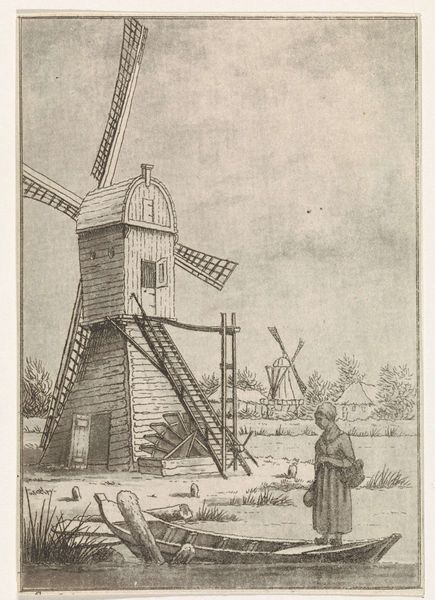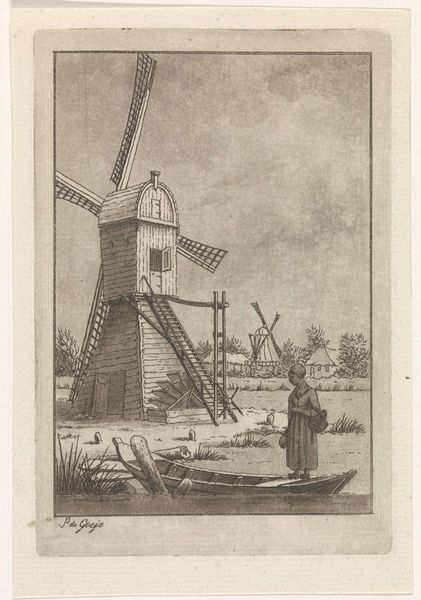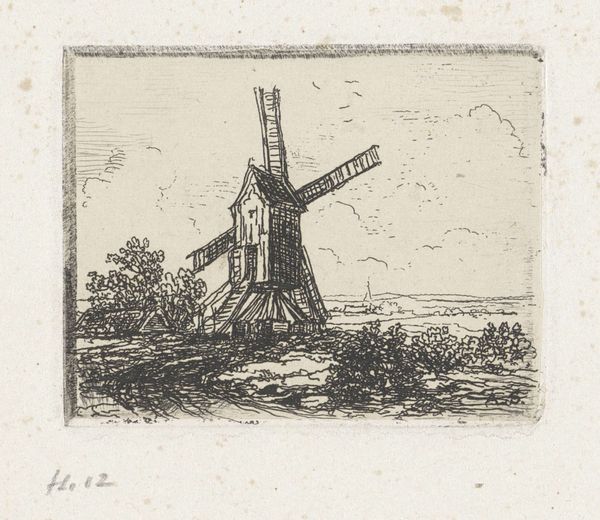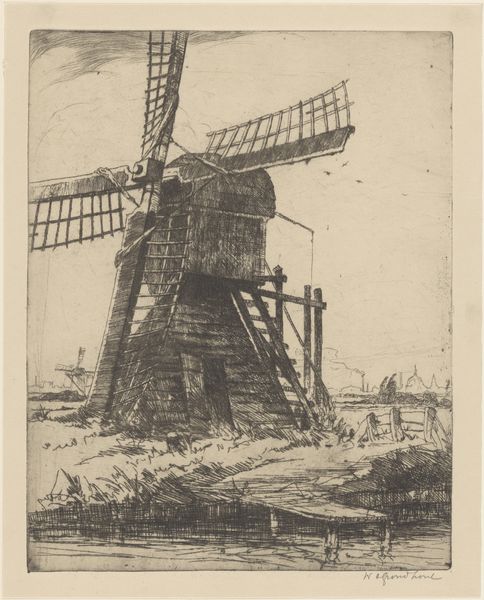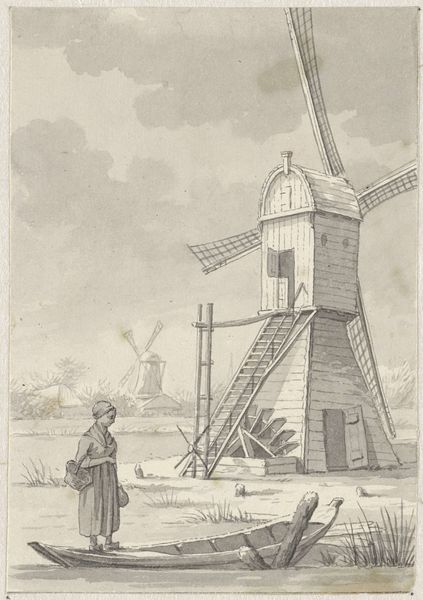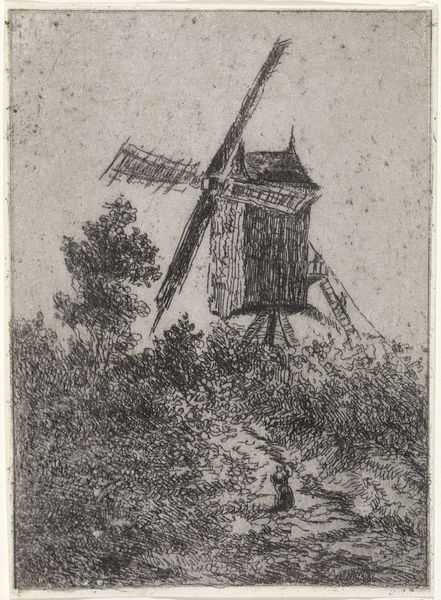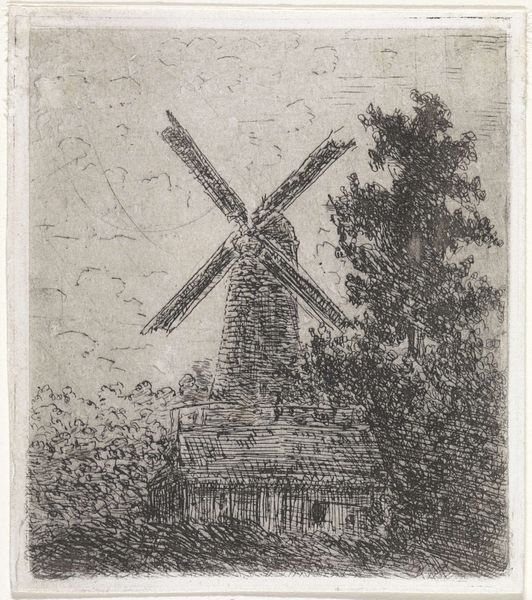
drawing, print, etching, ink
#
drawing
# print
#
etching
#
landscape
#
ink
#
line
#
genre-painting
#
realism
Dimensions: width 89 mm, height 130 mm
Copyright: Rijks Museum: Open Domain
Curator: A rather bleak and subdued piece if you ask me. There’s a pervasive quietness—even a chill—that the monochromatic ink drawing evokes. Editor: Indeed. Here we have Pieter de Goeje's "Winterlandschap met molen," created sometime between 1789 and 1859. It's an etching rendered in ink on paper. For me, that mill looms large as a cultural artifact, don't you think? A signifier of a particular Dutch ingenuity and industriousness set against a somewhat vulnerable rural existence. Curator: Absolutely. But observe how de Goeje centers the peasant woman; the gendered experience and labor often missing in depictions of rural life. Her basket and position in a small boat offer insight into women's critical economic role. It reads as an explicit comment on social hierarchy and perhaps an acknowledgement of the vital, often invisibilized, work of women within agrarian society. Editor: Yes, and consider how the mill, traditionally a symbol of prosperity and progress, appears almost dilapidated. The ladder propped precariously against it, the wear and tear – it carries an undeniable weight. Doesn't that evoke something of a precarious relationship with the land, with nature, with industry itself? It feels to me that de Goeje invites reflection on our interaction with such things. Curator: Precisely. It pushes past simple romanticism, suggesting the environmental and social tensions inherent in the transformation of land into capital, the potential degradation alongside idealized beauty. Note, too, the woman’s subtle expression, caught in the midst of hard physical labor and societal constraint. It encourages us to remember how such policies disproportionately impact marginalized bodies and contribute to exploitation. Editor: You’re right. I initially focused on the timeless aspects—mills representing transformation, water reflecting life's ebb and flow. It’s so simple on the surface but, just beneath that, it pulls the observer toward critical ideas about industrial growth. A surprisingly dense combination within such restrained line work, I would say. Curator: A testament to art's capacity to embed social critique within quiet, everyday scenes. Editor: Precisely. It challenges simplistic readings, and reminds us that landscape can signify not only geographical space, but complex social and philosophical meanings.
Comments
No comments
Be the first to comment and join the conversation on the ultimate creative platform.
